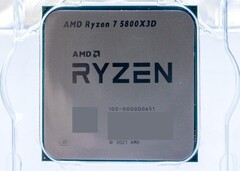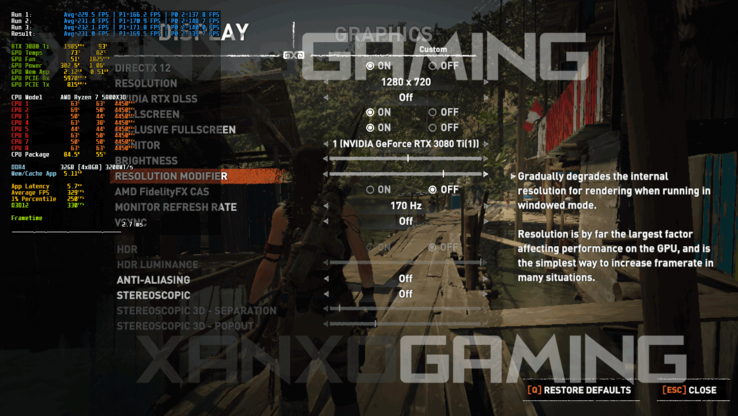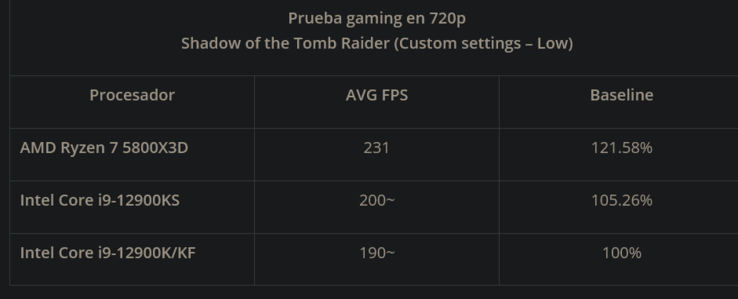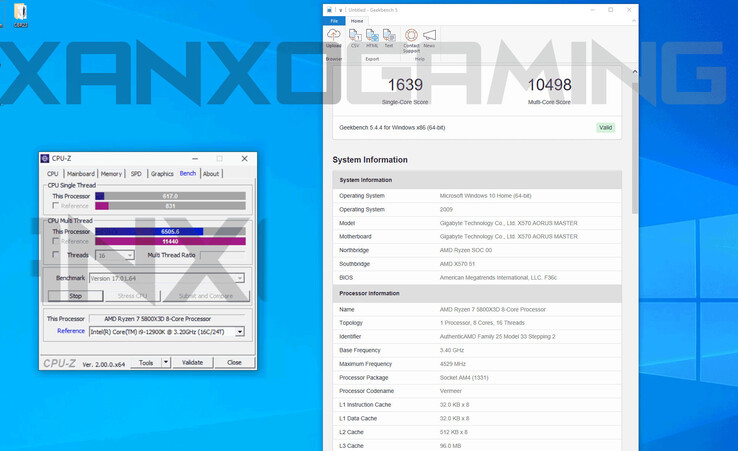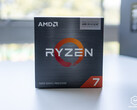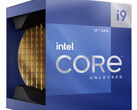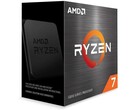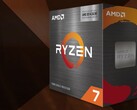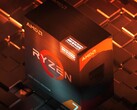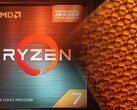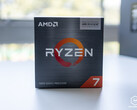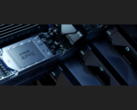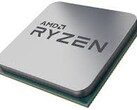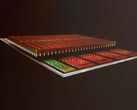Intel undoubtedly managed to regain the performance crown for desktop and laptop processors with the release of the 12th gen Alder Lake models, although AMD fans would argue that the victory came 1 year after the Zen 3 launch. While AMD is preparing the Zen 4 counterattack for a late 2022 release, Team Red is also testing the waters with the first 3D V-Cache technology implemented in models such as the Ryzen 7 5800X3D that is scheduled to release on April 20. There are hardly any complete reviews for this particular model out there at the moment regardless of the few retailers that are already selling it, but from what XanxoGaming has tested thus far, it looks like the additional L3 cache can help the X3D processors get the edge even over Intel’s i9-12900K in games, yet it does not seem to offer any advantage in synthetic tests like Cinebench or Geekbench.
XanxoGaming first tested the Ryzen 7 5800X3D with a Gigabyte AORUS Master X570 mobo (F36C BIOS) in synthetic benchmarks, and the results are rather underwhelming. This CPU scored 1639 points in single-core and 10948 points in multi-core running the latest Geekbench build. These results are a smidge lower than the regular 5800X, unfortunately. For CPU-Z and Cinebench, the 5800X3D appears to be 25% slower in single-core loads and up to 50% slower in multi-core loads compared to the i9-12900K. The situation is somewhat better in Blender, where the 5800X3D is between 3% and 11% faster than the 5800X.
The gaming side, however, looks way better for the 5800X3D model. Despite the clear hardware advantage for the Intel platform that benefits from DDR5-4800 DRAM over DDR4-3200 and an RTX 3090 Ti over an RTX 3080 Ti, the 5800X3D still manages to get around 21% more fps compared to the i9-12900K and around 16% more fps compared to the i9-12900KS in Shadow of the Tomb Raider. In order to minimize the GPU reliance, XanxoGaming chose to test the CPUs in 720p low with maximized shadow details that are very taxing on the processors only. Moreover, the 5800X3D results can be further improved by the upcoming AGESA 1207 update, as announced by the renowned 1usmus.
We still need to see more elaborate tests, but by the looks of it, AMD’s X3D models could represent a considerably more affordable gaming alternative to the i9-12900KS powerhouses from Intel.




